2025 Tax Reform Highlights – What you need to know about the ” One Big Beautiful Bill Act”
On July 4, 2025, the One Big Beautiful Bill Act (OBBBA) was signed into law, bringing sweeping changes to the U.S. tax code. The Act extends and enhances several key provisions from the 2017 Tax Cuts and Jobs Act (TCJA), revises energy-related incentives introduced in the Inflation Reduction Act (IRA), and introduces entirely new tax measures across multiple industries.
Below is a summary of the most notable updates that may impact you or your business.
Business Tax Provisions
100% Bonus Depreciation Made Permanent
Businesses can now immediately deduct the full cost of qualifying property placed in service after January 19, 2025—permanently reinstating 100% bonus depreciation.
Immediate Expensing for R&D Costs
Domestic research and development expenditures can now be fully expensed in the year incurred. This rule applies retroactively for certain small businesses and provides options for deductions on previously capitalized costs from 2022–2024.
Qualified Business Income Deduction Extended
The 20% deduction for qualified business income is now permanent for noncorporate taxpayers. Income limits for eligibility have also been relaxed.
SALT Deduction Cap Temporarily Increased
From 2025 to 2029, the state and local tax deduction cap rises to $40,000, with slight annual increases. The cap returns to $10,000 in 2030 and is subject to phaseouts for higher-income households.
Business Interest Deduction Cap Reverts to EBITDA
The interest deduction limit is now permanently based on 30% of EBITDA, rather than EBIT—allowing many businesses to deduct more interest.
Excess Business Loss Limitation Made Permanent
The cap on business losses for individuals is now a permanent part of the tax code. Losses that exceed the annual limit cannot be used to offset other income in the current year but will convert into net operating losses (NOLs) for future use.
Expanded Benefits for Qualified Small Business Stock (QSBS)
The Act significantly improves the tax treatment of QSBS:
- The gross asset test for eligible companies increases from $50 million to $75 million
- The exclusion limit on gains rises to $15 million (up from $10 million), adjusted for inflation
- Partial exclusions now apply:
- 50% exclusion if held for 3 years
- 75% exclusion if held for 4 years
- 100% exclusion remains for 5 years or more
These changes apply to stock issued after July 4, 2025, offering expanded tax planning opportunities for startups and early investors.
Semiconductor Investment Tax Credit Increased
The investment tax credit for domestic semiconductor facilities increases from 25% to 35% for property placed in service after December 31, 2025.
Publicly Traded Partnerships Expanded
More industries—such as clean energy and carbon capture—are now eligible to operate as publicly traded partnerships without being taxed as corporations, providing additional flexibility in business structuring.
International & Corporate Taxation
Revised GILTI and FDII Regimes
Renamed as “Net CFC Tested Income” (NCTI) and “Foreign-Derived Deduction Eligible Income” (FDDEI), these provisions now have a 14% effective tax rate. The OBBBA simplifies compliance and enhances foreign tax credit treatment.
Permanent BEAT Rate of 10.5%
The Base Erosion Anti-Abuse Tax is now permanently fixed at 10.5% for applicable corporations.
CFC Rules and Look-Through Provisions
Favorable rules for U.S. shareholders of foreign subsidiaries are restored and made permanent, easing tax burdens for international business structures.
Energy Tax Incentives and Limitations
Tighter Deadlines for Wind and Solar Projects
To qualify for energy tax credits, projects must begin construction before July 4, 2026 and be placed in service by the end of 2027. Additional restrictions apply to foreign-owned or foreign-influenced projects
Fuel Cell and Hydrogen Credit Expansion
Fuel cell projects now qualify for a 30% investment credit and are subject to fewer compliance requirements.
Clean Fuel Credits Extended Through 2029
While extended, these credits now come with new requirements around emissions, feedstock sources, and credit caps. Certain enhanced rates (like for aviation fuel) have been removed.
Carbon Capture Credits Enhanced
Credits for captured CO₂ used in manufacturing or energy recovery now match those for secure geological storage.
Real Estate and Investment
REIT Asset Test Threshold Increased
Real Estate Investment Trusts (REITs) may now have up to 25% of their assets in taxable subsidiaries—up from the previous 20% limit.
Opportunity Zone Program Made Permanent
The OZ program is extended indefinitely, with new requirements for zone re-identification every 10 years and added reporting obligations. A new rural OZ program offers larger exclusions for certain investments.
Other Key Provisions
Higher Taxes on Large University Endowments
Higher tax rates (up to 8%) now apply to large university endowments. Institutions with fewer than 3,000 students are exempt.
No Tax on Litigation Funding
A proposed excise tax on third-party litigation financing was ultimately excluded from the final legislation.
What This Means for You
The OBBBA reinforces a pro-business tax environment. Whether you’re investing in equipment, launching a new venture, raising capital, or evaluating losses, these updates offer new tools for reducing your tax burden and planning long-term growth.
We encourage you to review your tax strategy with these changes in mind. CAPATA is here to help you make the most of the new law—whether through QBI optimization, entity structuring, or tax credit utilization.
Questions?
Reach out to us directly at adminteam@capatacpa.com to schedule a planning session to review how these changes may impact your situation.
Staying informed with CAPATA — turning complexity into clarity.




